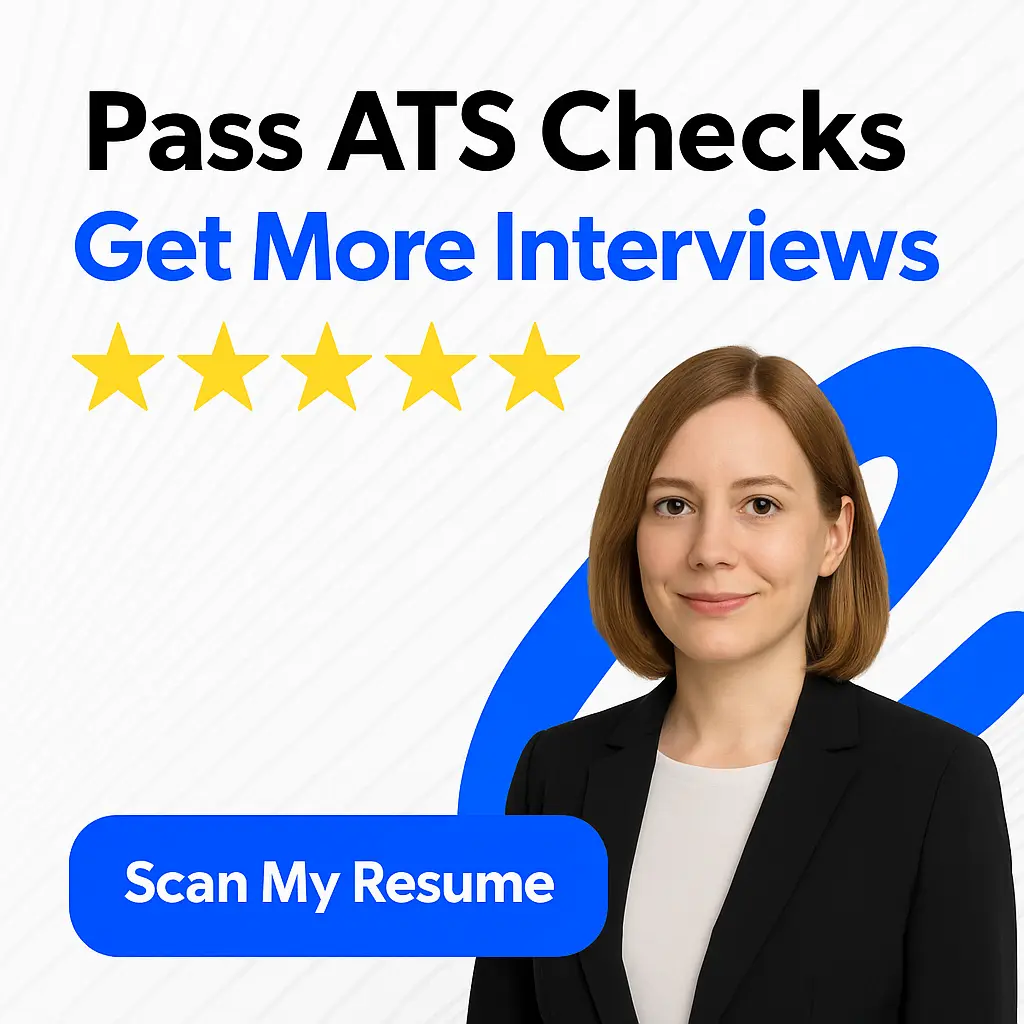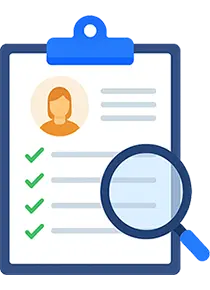When it comes to applying for jobs, resumes are critical documents that can make all the difference in securing an interview. Unfortunately, for job seekers with no experience, crafting a compelling resume can be a daunting task. Without relevant work history to draw from, it can be challenging to know where to start in highlighting one’s skills and abilities.
This article aims to address the challenges faced by job seekers who are starting their careers and have little to no work experience. Through this guide, we hope to provide readers with actionable steps to overcome the hurdles of the job application process and increase their chances of landing their first job.
Stay tuned for tips on how to highlight transferable skills, emphasize education and certifications, and showcase any relevant volunteer or extracurricular experiences. We will also touch on the importance of tailoring each resume to the job descriptions and companies that you are applying to.
By the end of this article, we hope that job seekers with no experience will feel empowered to create a strong resume that accurately reflects their potential as employees. Let’s dive in!
Understanding the Basics of a Resume
A resume is a summary of a person’s work experience, education, skills, and achievements. It serves as a marketing tool for job seekers to showcase their qualifications and stand out from other applicants.


Definition of a Resume
A resume is a professional document that provides a brief overview of a person’s background and achievements. It outlines the candidate’s qualifications and experience to potential employers, highlighting their strengths and abilities.
Key Components of a Resume
The essential components of a resume include:
- Contact Information: Name, Address, Phone number, and Email address
- Summary Statement: A brief overview of your qualifications, experience, and relevant achievements
- Work Experience: A list of previous job positions held, including the company name, job title, dates of employment, and job duties
- Education: List of degrees, certifications, and coursework.
- Skills: A list of relevant skills, including technical, soft, and language skills.
- Achievements: Any notable achievements or awards that demonstrate your professional success
Different Types of Resumes
There are three main types of resumes: Chronological, Functional, and Combination.
-
Chronological Resume: This format is the most common and straightforward. It lists your experience in reverse chronological order, starting with the most recent position. This type of resume is ideal if you have consistent work experience in the same field.
-
Functional Resume: This format highlights your skills and achievements as opposed to job titles and dates. This type of resume is ideal for career changers, those with little work experience, or people with gaps in their employment history.
-
Combination Resume: This format combines the best aspects of Chronological and Functional resumes. It highlights your most relevant skills and accomplishments while also providing a chronological work history.
How to choose the right format for your resume
Choosing the right format for your resume is crucial to making a positive first impression on potential employers.
Consider the job you are applying for and tailor your resume accordingly. If you have a stable work history in the same field, a chronological resume is the best format. If you’re a recent graduate or changing careers, consider a functional or combination resume format to best showcase your skills, achievements, and potential.
Ultimately, the goal of your resume is to get you an interview, so make sure your resume highlights your qualifications and sets you apart from the competition.
Conducting a Self-Assessment
One of the essential steps in writing a resume with no experience is to conduct a thorough self-assessment. This involves identifying your skills, strengths, and weaknesses as well as determining your career objectives.
Identifying Your Skills, Strengths, and Weaknesses
Begin by listing down all the skills you possess, such as communication, problem-solving, time management, etc. Next, identify your strengths, or the areas where you excel the most. This could be a particular skill, knowledge, or attribute that sets you apart from others. Finally, recognize your weaknesses, which are the areas that need improvement. This could be a lack of experience or knowledge, or a particular skill that needs strengthening.
Determining Your Career Objectives
Once you have identified your skills, strengths, and weaknesses, it’s time to determine your career objectives. This involves setting clear goals and determining the type of job you want to pursue. Ask yourself what kind of work you enjoy doing, what skills and knowledge you want to develop, and what type of work environment you prefer. This will help you determine the right path to take and the type of job to apply for.


The Importance of Matching Your Skillset with the Job Description
When writing your resume with no experience, it’s important to keep in mind that employers are looking for candidates with the skills and expertise that match the job requirements. Review the job description carefully and look for keywords and skills that the employer is seeking. Then, tailor your resume to highlight your relevant skills and experience that match the job description. This way, you increase your chances of being shortlisted for an interview and ultimately getting hired.
Conducting a self-assessment is a crucial step in the resume writing process. It helps you identify your strengths and weaknesses, determine your career objectives, and match your skillset with the job description. By doing so, you increase your chances of standing out and getting hired, even with no prior work experience.
Creating a Compelling Resume Headline
One of the most crucial aspects of writing a compelling resume is crafting an attention-grabbing headline. This section will cover the following:
Understanding the purpose of a headline
The headline is the first thing potential employers will see when glancing at your resume, and it serves as the hook to entice them to keep reading. The primary function of a resume headline is to communicate your unique value proposition, which will ultimately land you the job you’re applying for.
Tips for crafting an attention-grabbing headline
To create an effective headline, here are some tips you should keep in mind:
- Research the job position. Review the job description to determine the most critical qualifications and characteristics the employer is seeking. Incorporate keywords from the job posting into your headline.
- Identify your strongest qualities. Think about what sets you apart from other applicants and what you can bring to the table. Highlight your most relevant skills and experiences.
- Be clear and concise. Use simple language that’s easy to read and understand. Don’t use unnecessary jargon or buzzwords.
- Keep it short. Your headline should be brief and to-the-point. Stick to 10-12 words max.
- Make it memorable. Use action words and vibrant language to capture the employer’s attention. Be creative and show personality.
Examples of effective resume headlines
Here are some examples of strong resume headlines:
- Customer Service Specialist with a Passion for Solving Problems
- Digital Marketing Coordinator with Proven Results in Social Media Management
- Award-Winning Journalist with Expertise in Investigative Reporting
- Sales Representative with a Track Record of Exceeding Quotas
- Operations Manager with Experience in Streamlining Processes and Reducing Costs
By following these guidelines, you’ll be on your way to crafting a powerful headline that makes a lasting impression on potential employers.
Writing a Powerful Resume Summary
Your resume summary is the first thing that a recruiter will see, so it’s essential to make it count. It’s the perfect opportunity to showcase your skills, achievements, and projects concisely and convincingly. A compelling summary will grab the recruiter’s attention, making them want to read on and learn more about you. Here are some tips to help you write a powerful resume summary:
Importance of summary in grabbing the recruiter’s attention
Recruiters often receive hundreds of resumes for each job posting, so they usually have limited time to review each one. This is where your summary comes in – it’s your chance to quickly and effectively capture the recruiter’s attention and persuade them that you’re the best candidate for the job. A well-crafted summary will entice the recruiter to keep reading and learn more about you.
How to showcase your skills, achievements and projects in the summary
Your summary should be a brief, three to five sentence paragraph that highlights your most impressive accomplishments, skills, and relevant experiences. It should be tailored to the specific job you’re applying for and should give the recruiter a clear picture of what you can bring to the role.
To showcase your skills, start by identifying the most important ones that match the job requirements. Then, choose the accomplishments and projects that demonstrate those skills. Use concrete numbers and statistics to quantify your achievements wherever possible. For example, instead of saying “I increased sales”, say “I increased sales by 15% in six months”.
Examples of effective resume summaries
Here are some examples of effective resume summaries:
-
Highly motivated and detail-oriented recent graduate with strong organizational skills and excellent communication abilities. Completed an internship in the marketing department of a Fortune 500 company, where I developed and executed social media campaigns that generated a 20% increase in engagement. Seeking an entry-level marketing role where I can utilize my skills and continue to grow.
-
Talented graphic designer with five years of experience creating visually stunning designs for a variety of print and digital media. Proficient in Adobe Creative Suite and experienced in all aspects of the design process from concept to final product. Looking for a challenging role in a creative agency where I can continue to develop my skills and create exceptional designs for clients.
-
Passionate educator with a master’s degree in education and two years of experience teaching high school students. Skilled in creating engaging lesson plans, facilitating class discussions, and managing classroom behavior. Seeking a role in a progressive high school where I can make a difference in students’ lives and contribute to the school’s success.
A well-crafted resume summary is an essential component of a resume, particularly if you’re a recent graduate or changing careers, and don’t have much experience. It’s your chance to showcase your skills, achievements, and projects and make a strong first impression on the recruiter.
Highlighting Your Education and Certifications
When you have no experience, highlighting your education and certifications can help you stand out to potential employers. Here are some tips for crafting an effective education section:
How to showcase your academic and professional accomplishments
When listing your education, include the following information:
- Name of degree or certification
- Name of school or institution
- Date of graduation or expected graduation
- GPA (if above 3.0)
Make sure to highlight any relevant coursework, projects, or activities you participated in during your studies. If you have any academic awards or honors, be sure to include those as well.
For certifications, include the following information:
- Name of certification
- Certifying organization
- Date of certification
Tips for crafting an education section when you have no experience
If you’re a recent graduate or have no work experience in your field, your education section can be the highlight of your resume. Here are a few tips:
- Focus on coursework or projects that are directly relevant to the position you’re applying for.
- If you have a high GPA, include it in your education section to show your dedication to academic success.
- If you participated in any extracurricular activities, clubs or organizations that are related to the job, include those as well.
Examples of effective education sections
Here are some examples of effective education sections:
Bachelor’s Degree in Business Administration
XYZ University, Graduated May 2019
- Relevant coursework: Marketing Research, Financial Accounting, Organizational Behavior
- Dean’s List for all semesters
- President of the Business Club
Certified Project Management Professional (PMP)
Project Management Institute, Certification obtained September 2020
Associate’s Degree in Nursing
ABC College, Graduated May 2020
- Relevant coursework: Anatomy and Physiology, Pathophysiology, Patient Care Management
- Clinical experience: 200+ hours in various healthcare settings
Remember, your education section can be an important tool for showcasing your qualifications and achievements, even if you don’t have much work experience yet. Use these tips and examples to craft a strong education section that catches employers’ attention.
Showcasing Relevant Experience & Projects
When writing a resume with no professional experience, it’s important to identify and showcase any relevant experiences and projects. This can include:
How to identify and showcase relevant experiences and projects
-
Look for transferable skills: Think about any previous jobs, internships, or volunteer work that you’ve done and identify transferable skills. For example, if you worked in retail, you have customer service skills that can be useful in many different industries.
-
Emphasize accomplishments: Focus on what you’ve accomplished rather than just your responsibilities. If you organized a successful event or managed a team, highlight those achievements.
-
Tailor your resume to the job: Customize your resume to fit the job you’re applying for. Highlight experiences that are relevant to the job description.
What to do when you have no professional experience
Don’t worry if you have no professional experience! There are still ways to showcase your skills and experience:
-
Include any relevant coursework: If you’re a recent graduate or currently in school, highlight any relevant coursework you’ve completed.
-
Use personal projects: If you’ve completed any personal projects that showcase your skills, include them in your resume.
-
Focus on transferable skills: Like mentioned before, look for any transferable skills you have and emphasize them in your resume.
Using volunteer work and extracurricular activities to boost your profile
Volunteer work and extracurricular activities can show that you’re proactive and have valuable skills. Here are some ways to showcase them:
-
List volunteer experiences: List any volunteer work you’ve done, highlighting any leadership roles you’ve taken on.
-
Highlight extracurricular activities: Include any relevant extracurricular activities, such as clubs or organizations you’ve been a part of.
-
Emphasize key skills: In both cases, make sure to emphasize any key skills you gained from these experiences.
There are many ways to showcase relevant experiences and projects in a resume, even without professional experience. Identifying transferable skills, emphasizing accomplishments, and tailoring your resume to the job you’re applying for can help you stand out to potential employers. Additionally, don’t hesitate to include any volunteer work or extracurricular activities that can highlight your skills and show that you’re proactive.
Writing Professional Skills and Languages Section
One of the most crucial sections of a resume is the professional skills and languages section. This section is essential because it gives recruiters an idea of the skills and abilities the candidate can bring to the table.
Importance of Professional Skills and Languages Section
The skills section can be the determining factor in the selection process. Employers want to know whether you possess the skills necessary to excel in the role for which you are applying. Listing your professional skills and languages will give you an edge over other candidates.
Also, having a language section is like a bonus section in your resume. If you are fluent in a language other than English, it improves your prospects and shows that you have a unique skill.
Therefore, it is essential to create an effective skills section in your resume:
Tips to Create a Skills Section in Your Resume
-
Be Relevant: List skills that are relevant to the position you are applying for. Read the job description and highlight the necessary skills they are seeking.
-
Prioritize: List your top skills first. If you have a limited amount of space, make sure to put the most important skills first.
-
Use Keywords: Use keywords related to your industry or profession. Many companies use software to screen through resumes based on keywords.
-
Be Specific: Instead of vaguely stating “communication skills” or “problem-solving skills”, try to be specific by stating “public speaking” or “conflict resolution.”
-
Quantify your skills: Quantify your skills by providing examples of how you utilized them in your previous roles.
Examples of Professional Skills and Languages Sections
Example 1:
Professional Skills:
- Social Media Marketing
- Content Writing
- SEO Optimization
- Data Analysis
- Project Management
Languages:
- English (Fluent)
- Spanish (Conversational)
Example 2:
Professional Skills:
- Graphic Design
- Web Development
- Video Editing
- Software Development
- Mobile App Development
Languages:
- English (Fluent)
- French (Native)
- Arabic (Conversational)
These examples demonstrate how a skills section should look like. By having a clean, organized, and relevant skills section, you can make your resume stand out regardless of whether you have experience.
Incorporating Power Words and Action Verbs
One crucial aspect in creating an impressive resume is the use of power words and action verbs. These words can grab the attention of the hiring manager, communicate your skills and achievements effectively, and set you apart from other candidates. In this section, we will discuss the importance of power words and action verbs, how to identify and use effective ones, and provide examples for different industries.
Importance of Power Words and Action Verbs in Your Resume
Power words and action verbs are essential in any resume, whether you have work experience or not. They can make your resume stand out and showcase your qualities and accomplishments. When used correctly, these words can communicate your value proposition in a concise, clear, and persuasive manner. By incorporating these types of words, your resume can convey your motivation, passion, and drive.
In particular, action verbs are crucial as they convey action and drive. They illustrate your abilities to take initiative, solve problems, and manage tasks, all essential qualities in any professional setting. Likewise, power words provide an added boost, providing impact and increasing the effectiveness of your statements.
How to Identify and Use Effective Power Words
The key to effective use of power words and action verbs is understanding how to use them and when. To identify and use effective power words, consider using job descriptions and requirements as your guide. Look for keywords from the job ad, such as “collaborate,” “innovate,” “manage,” “create,” or “streamline.” Additionally, review the company’s website or LinkedIn profiles of current employees to find relevant industry terms.
Once you’ve identified relevant words, make use of them in your resume. Consider starting each bullet point with a power word or action verb. By doing so, you not only showcase your skills and strengths but create a sense of action and excitement. Some examples of effective action verbs are “led,” “managed,” “created,” “generated,” “implemented,” “coordinated,” “resolved,” and “improved.” There are also many power words that you can use to enhance the effectiveness of your statements. Some examples are “achieved,” “exceeded,” “streamlined,” “maximized,” “innovated,” “transformed,” “solved,” and “delivered.”
Examples of Power Words and Action Verbs for Different Industries
The power words and action verbs you use will vary depending on your industry and your specific role. For instance, if you’re applying for a marketing position, some powerful words may include “promoted,” “launched,” “positioned,” and “targeted.” If you’re applying for a teaching position, you might use words such as “instructed,” “facilitated,” “motivated,” and “assessed.
Formatting Tips for Resumes
As a job seeker with no experience, you need to make your resume stand out to prospective employers. This is where formatting comes in. Your resume’s formatting is the first thing recruiters and hiring managers notice when sifting through piles of job applications. A well-formatted resume makes a great first impression and can land you an interview even if you don’t have any work experience.
Importance of formatting in a resume
Employers receive a large number of resumes for any given position, which means they don’t have much time to spend on each individual application. They need to be able to quickly scan and evaluate your resume to determine if you’re worth considering for the position. A poorly formatted resume can be a turnoff and lead to your application being tossed aside. On the other hand, a well-formatted resume that is easy to read and aesthetically pleasing can make all the difference. Employers are more likely to read through your resume and take you seriously if it is well-formatted.
Tips to create a sleek and professional looking resume
-
Use a clean and simple design: Avoid using funky fonts or crazy colors on your resume. Keep it simple and use a clean, easy-to-read font like Arial or Times New Roman.
-
Emphasize important information: Use bold, italic or underline to highlight important information like your name, contact information, and job titles.
-
Use bullet points: Bullet points make your resume easy to read and help organize information in a clear and concise manner.
-
Keep it brief: Your resume should ideally be one page in length. Only include relevant information and avoid including unnecessary details.
-
Be consistent: Keep the formatting consistent throughout your entire resume. This makes it easier to read and gives your resume a professional look.
Examples of different formatting styles
There are different formatting styles you can use when creating your resume, depending on your personal preference and the industry you’re applying to.
Chronological Resume
This is the most common resume format, which is organized in reverse chronological order, meaning the most recent work experience is listed first.
Functional Resume
This format focuses on your skills and achievements rather than your work experience. In this format, you would list your skills and abilities at the top of your resume, followed by your work history.
Combination Resume
This format combines elements of both chronological and functional resumes. It highlights your skillset while still emphasizing your work history.
Creative Resume
This format is best used for creative professions like graphic design. It includes elements like graphics, charts, and color schemes to showcase your creativity to prospective employers.
Formatting your resume is a crucial step in the job application process. A well-formatted resume can make all the difference when it comes to getting your foot in the door.
Making Your Resume ATS-Friendly
When applying for a job, it’s important to understand how Applicant Tracking Systems (ATS) work. ATS is software used by companies to streamline the recruitment process by screening resumes for specific keywords and qualifications. Your resume must be ATS-friendly to be considered for the job. Here are some tips on how to optimize your resume for ATS:
Understanding the Purpose of ATS
Companies use ATS to save time and resources during recruitment. Instead of manually reviewing resumes, ATS scans resumes for keywords and phrases that match the job description. Recruiters often receive hundreds of resumes for a single job posting, so if your resume doesn’t contain the relevant keywords, it may not even make it to the recruiter’s desk. Therefore, understanding how ATS works and optimizing your resume for ATS can improve your chances of getting hired.
Tips for Making Your Resume ATS-Friendly
-
Use the job description to your advantage – carefully read the job description and identify the job-specific skills and qualifications required. Use those same words and phrases in your resume and cover letter.
-
Use simple formatting – avoid graphics, tables or unique formatting that ATS scanners may not recognize. Stick to a simple, organized structure that is easy to scan and understand.
-
Keep it concise – try to keep your resume within two pages and bullet point your experience in a clear and concise manner.
-
Use appropriate keywords – identify the right keywords by looking at the job description and making sure they appear throughout your resume.
-
Relevant experience – only include experience that is relevant to the job and use strong action words and metrics to quantify your achievements.
Examples of How to Optimize Your Resume for ATS
-
Job Description: “Looking for a highly motivated individual with excellent communication skills”
- ATS-friendly resume: “Effective communicator with strong interpersonal skills”
-
Job Description: “Proficient in Microsoft Excel and data analysis”
- ATS-friendly resume: “Experienced in data analysis and proficient in MS Excel”
-
Job Description: “Experience in managing social media accounts”
- ATS-friendly resume: “Managed social media accounts for a company of XYZ size with proven success in improving engagement”
By following these tips, you can ensure that your resume is ATS-friendly and optimized for the job you’re applying for. Remember, it’s not just about being qualified for the job, but also being qualified to make it through the screening process. Good luck!
Related Articles
- What to Do If You Hate Your Job? How to improve
- Media Director: Job Description and Responsibilities in 2023
- Vice President Global Human Resources Resume in 2023
- Solicited Application Letters: Writing an Effective Letter
- 20 Brand Manager Resume Example & Writing Guide for 2023









